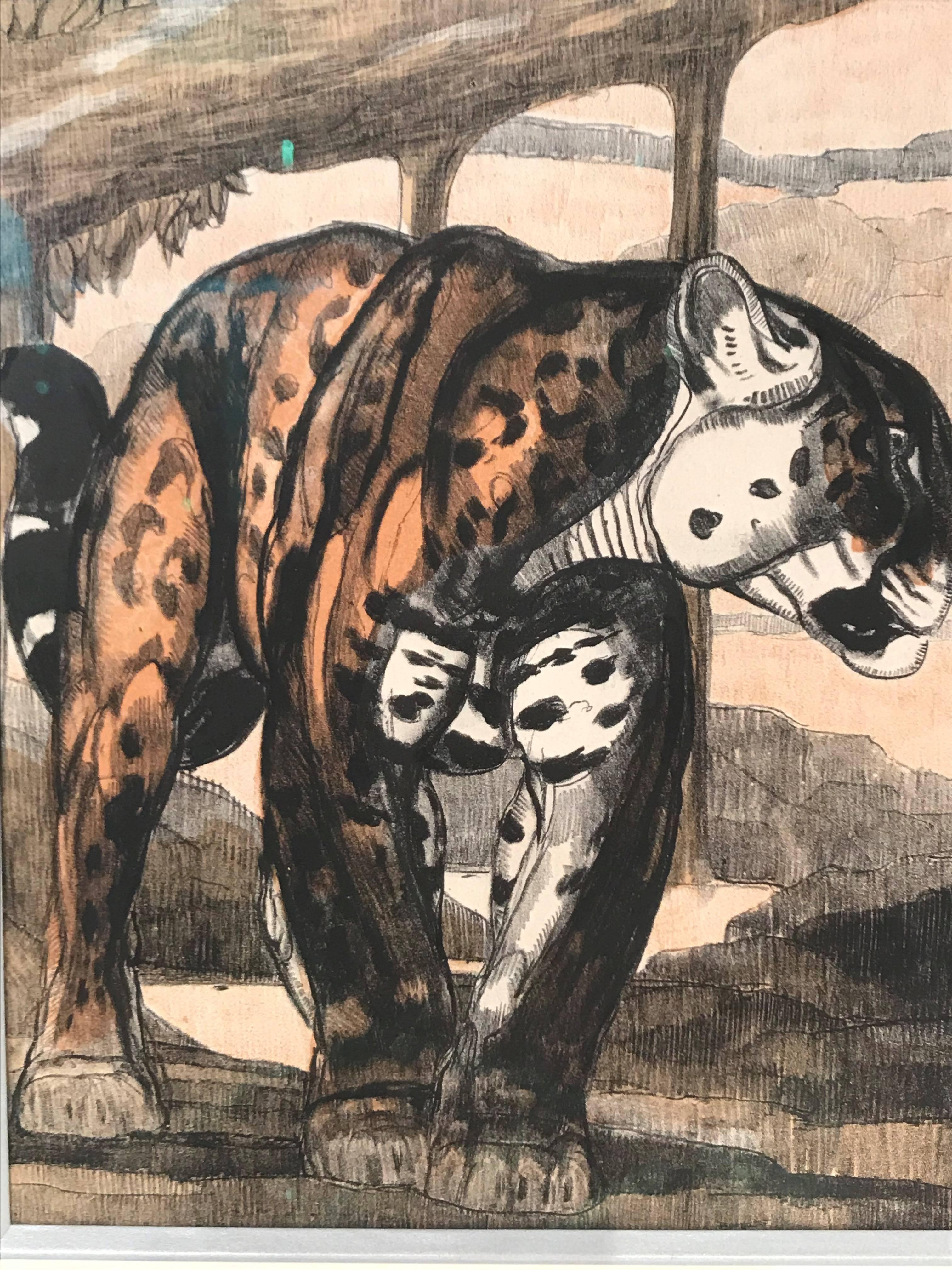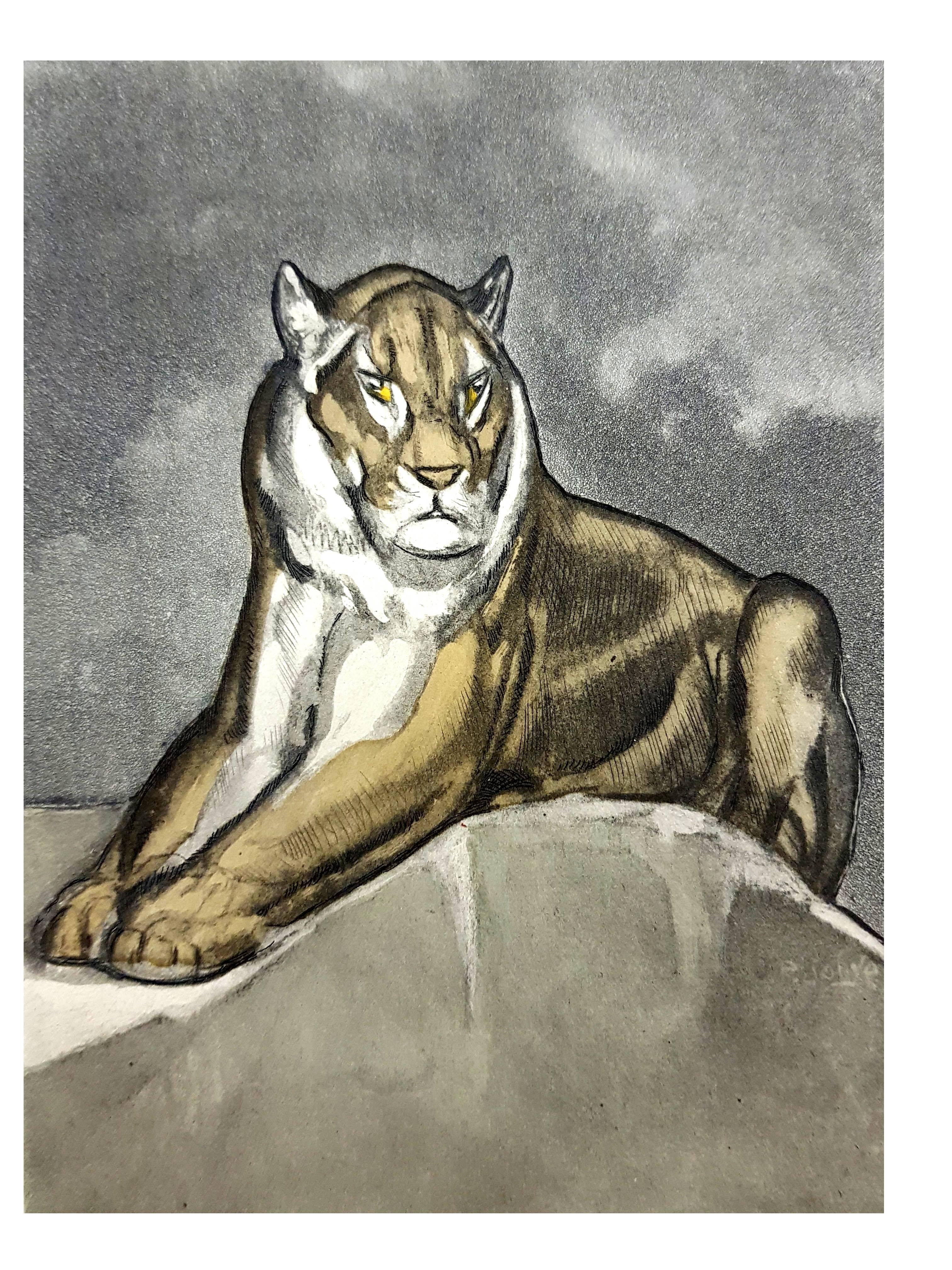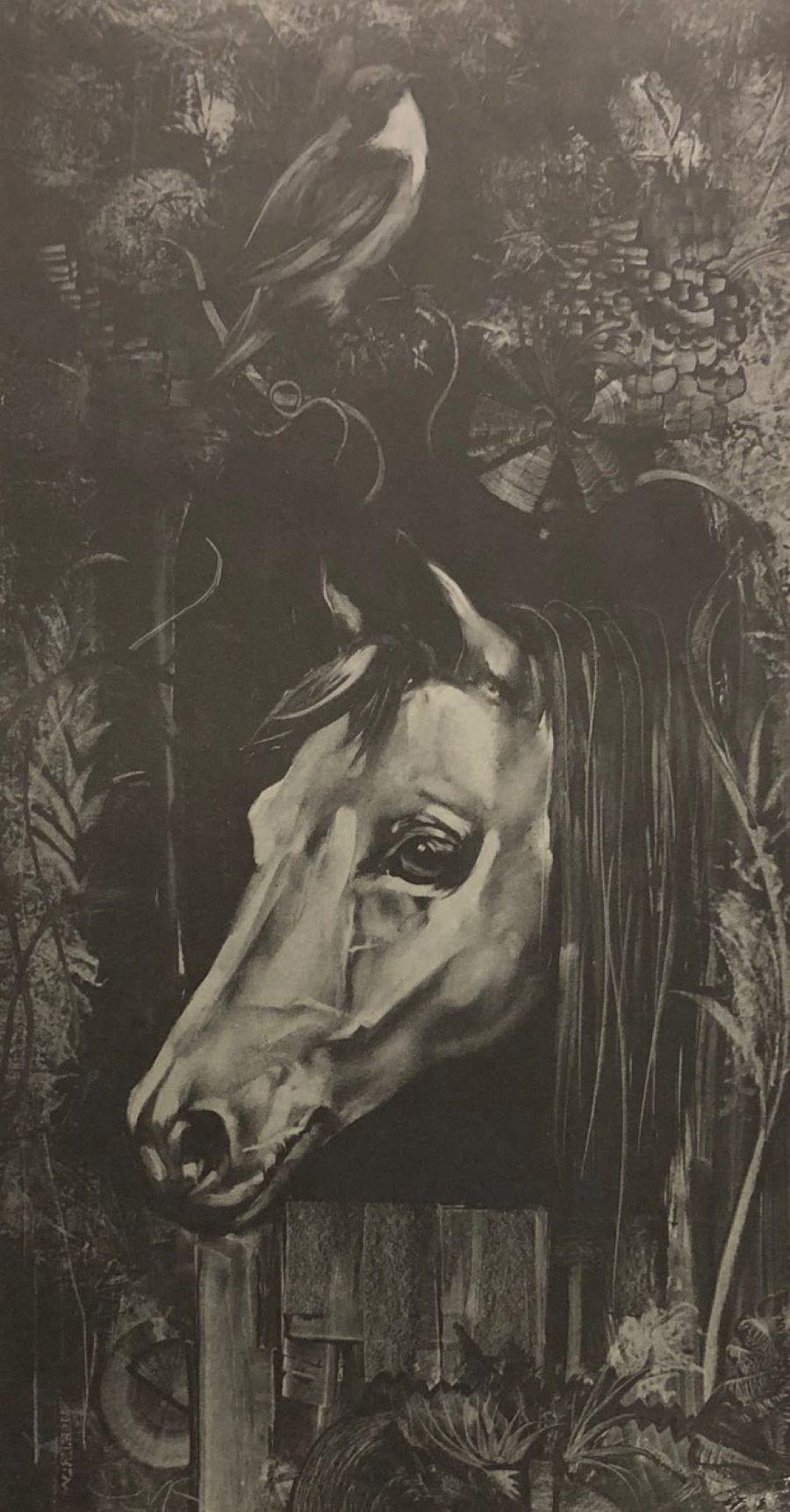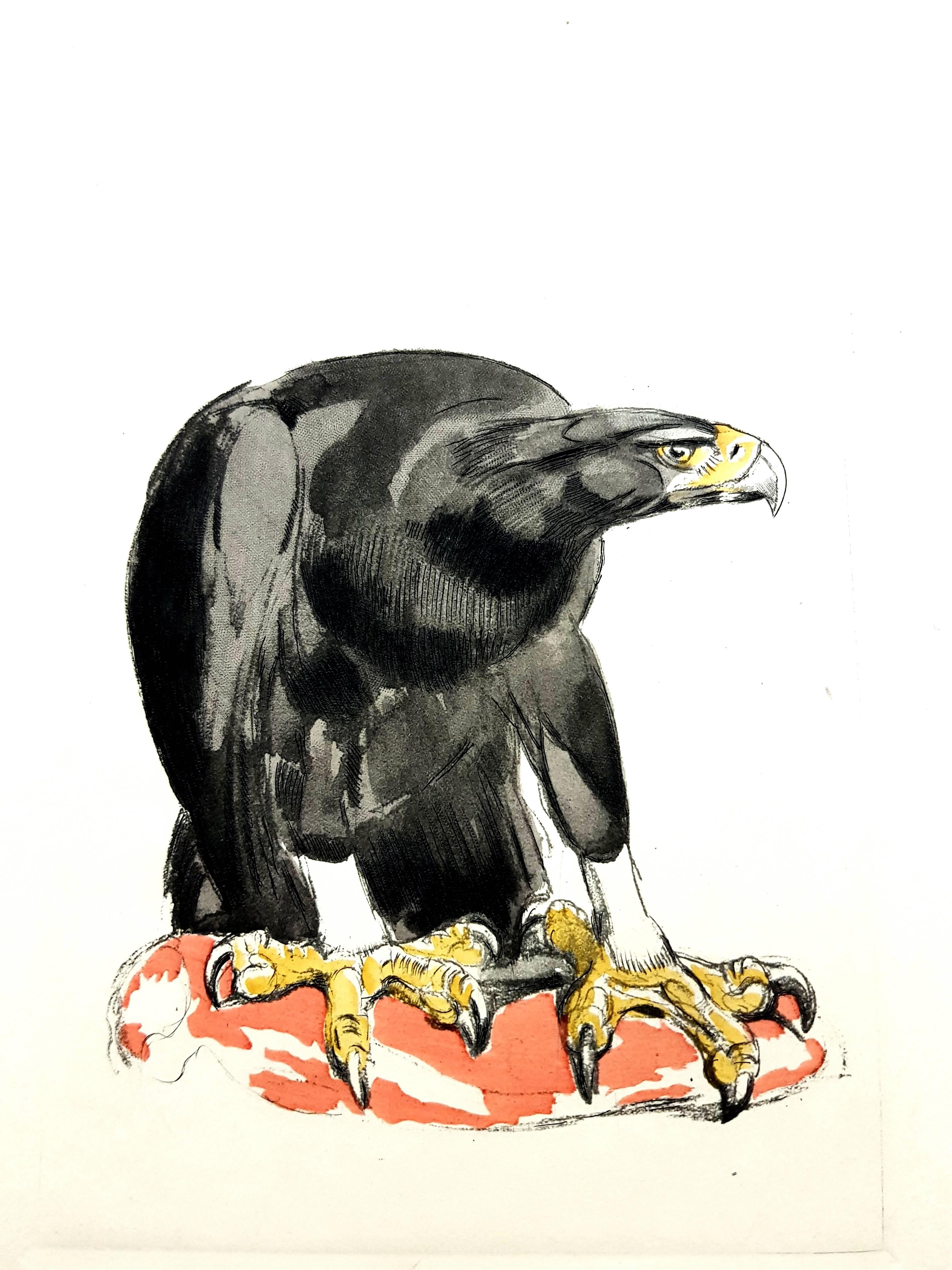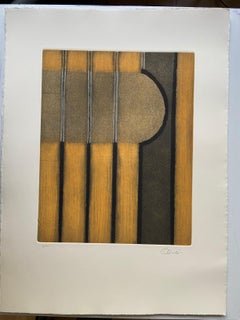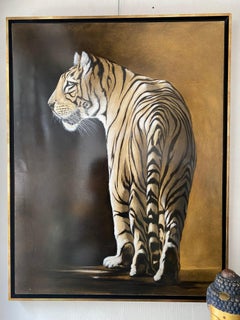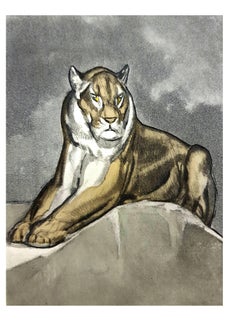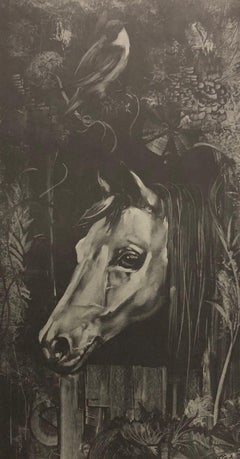Items Similar to Gravure Panthere 2
Want more images or videos?
Request additional images or videos from the seller
1 of 5
Paul JouveGravure Panthere 21948
1948
$1,529.41
£1,163.83
€1,300
CA$2,142.84
A$2,333.71
CHF 1,230.48
MX$28,384.65
NOK 15,473.28
SEK 14,512.68
DKK 9,901.63
About the Item
Engraving after Paul Jouve
From the work of Terrasse in 1948
490 copies
Size etching: 23 x 18 cm
Frame: 45 x 49 cm
- Creator:Paul Jouve (1880 - 1973, French)
- Creation Year:1948
- Dimensions:Height: 9.06 in (23 cm)Width: 7.09 in (18 cm)
- Medium:
- Period:
- Condition:
- Gallery Location:Saint Ouen, FR
- Reference Number:Seller: PJOU0021stDibs: LU64632575703
Paul Jouve
In the time when the School of Fine Arts and official or special academies promote
the study of human model, Paul Jouve,
influenced by his father, prominent
landscape painter and portraitist, shows
more interest in study of animal models.
Since his childhood, his father took him
to Paris museums and botanic gardens and
to Jardin d’Acclimatation - he will keep coming
back to them during his entire career -
At the age of 16, simultaneously with
his art studies Paul Jouve learns the
art of gravure and the lithography at
Henri Patrice Dillon He was then noticed by Renée Binet, the
architect in charge for the construction
of many buildings at Universal Exhibition
in 1900, who for this occasion order from
Jouve to make two groups of lions and to
decorate the monumental gateway of one
significant frieze in sandstone made by
Alexandre Bigot.
The support of the Gallery Bing where
he exhibited his work in 1905 enables
him to finance his travels to Europe and
Algeria. Numerous journeys he undertook during
his life thanks to awarded scholarships
-Algeria, Equatorial, Africa or Far-East- or historical
events, like those in Greece during the WWI,
enabled him to record new terminology
and numerous graphic and animaliers
repertoires that his talent of drawer,
illustrator, engraver and sculptor
fantastically depicts.
Paul Jouve exhibits in 1911
in the Gallery of Modern Artists, over
one hundred thirty drawings and four
sculptures. The press is unanimous and acknowledges
the contained force and the architecture
of his figures, constancy of his models
and his precise meaning of forms ; Jouve’s
eye sees beyond visible and catches
what is sudden, fugitive, and sometimes
silent ; the animal comes out from the
lines of the drawing, he liked to say.
The press, the critique and the collectors
are also unanimous when in 1921 the
Group of Four was created, gathering
talents like Paul Jouve, Jean Goulden
and François-Louis Schmied under the
leadership of Jean Dunand. Every year
until 1933, the group exhibited in the
Gallery Georges Petit, different pieces
like furniture, works of art, paintings,
book covers and enamels.
Simultaneously, Paul Jouve, now leader of the animaliers,
exhibits with them regularly in the gallery
Brandt. In 1929 it was renamed Gallery
Malesherbes and later around 1933, it
was taken over by Edouard-Marcel Sandoz.
After the war the group exhibited in
the gallery Art vivant and finally, from
1948 to 1957, in circle Volney, also
purchased by Sandoz.
Jouve’s career is marked by prestigious
orders, such as Ocean liner Normandie in 1935, and the literary work he will
illustrate during his career, such as Jungle
book by Kypling in 1919.
In years after the WWII some beautiful
retrospectives of his work took place.
All his life he dedicated his multiple
talent to animal, drawn and statuary
character of his work, without ever
betraying or leaving his virtuosity.
Being a great traveler, from Bedouin
tents to Angkor, he gave to his work an
incomparable and unique diversity made
of light, architecture, expressions
and imagination.
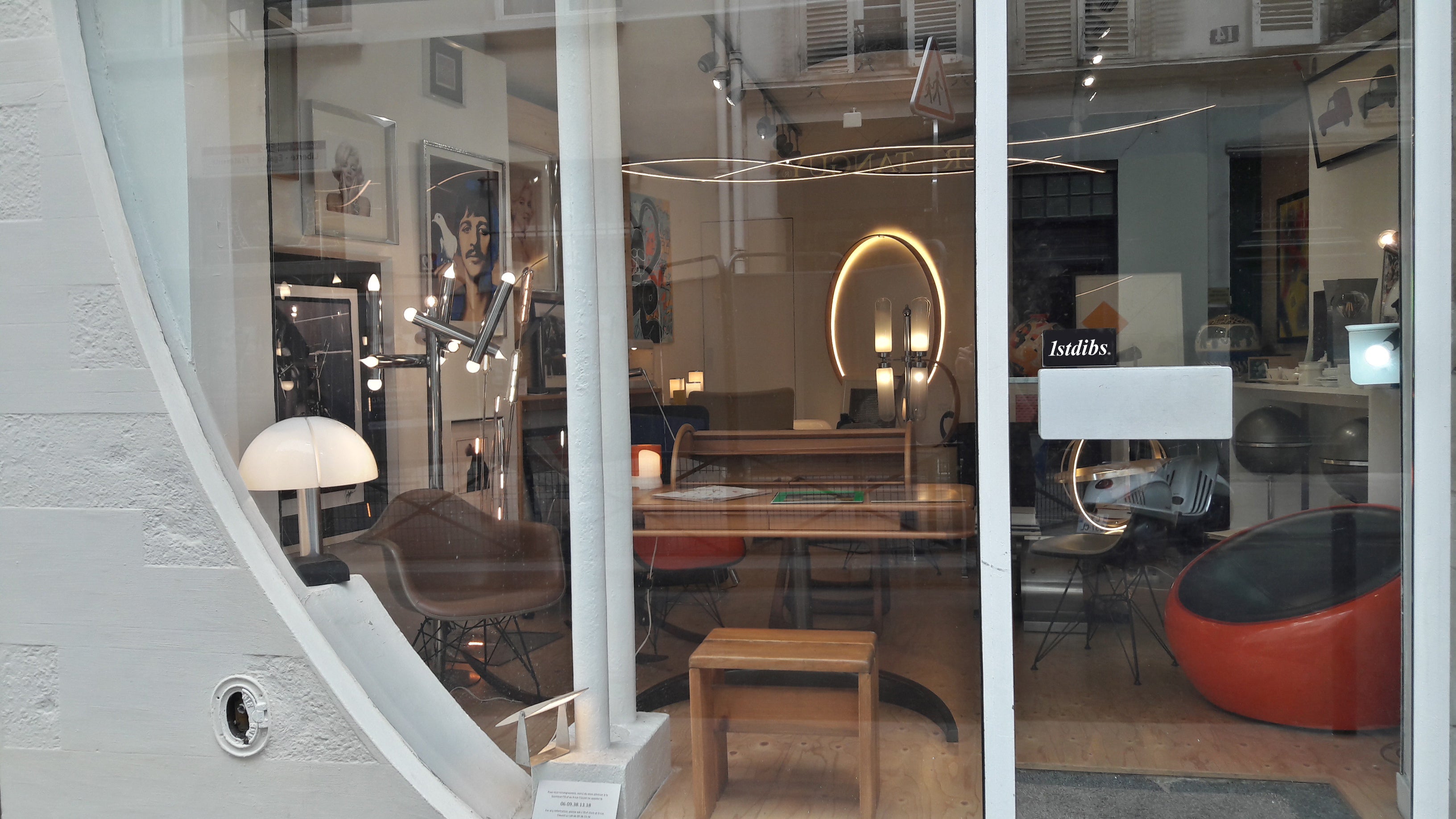
About the Seller
4.8
Vetted Professional Seller
Every seller passes strict standards for authenticity and reliability
Established in 2015
1stDibs seller since 2017
402 sales on 1stDibs
Typical response time: 20 hours
- ShippingRetrieving quote...Shipping from: Saint Ouen, France
- Return Policy
Authenticity Guarantee
In the unlikely event there’s an issue with an item’s authenticity, contact us within 1 year for a full refund. DetailsMoney-Back Guarantee
If your item is not as described, is damaged in transit, or does not arrive, contact us within 7 days for a full refund. Details24-Hour Cancellation
You have a 24-hour grace period in which to reconsider your purchase, with no questions asked.Vetted Professional Sellers
Our world-class sellers must adhere to strict standards for service and quality, maintaining the integrity of our listings.Price-Match Guarantee
If you find that a seller listed the same item for a lower price elsewhere, we’ll match it.Trusted Global Delivery
Our best-in-class carrier network provides specialized shipping options worldwide, including custom delivery.More From This Seller
View AllGravure Panthere 1
By Paul Jouve
Located in Saint Ouen, FR
Engraving after Paul Jouve
From the work of Terrasse in 1948
490 copies
Size etching: 23 x 18 cm
Frame: 45 x 49 cm
Category
2010s Animal Prints
Materials
Engraving
Lithograph - Untitled - 5
By Perry Oliver
Located in Saint Ouen, FR
Perry Oliver Lithograph - Untitled - 5
Lithograph edited and printed by Poligrafa Barcelona in 1999
Signed and numbered 2/50
Category
1990s Abstract Abstract Prints
Materials
Paper
André Ferrand - The Tiger
By André Ferrand
Located in Saint Ouen, FR
André Ferrand - The Tiger
Oil on canvas
2010
Dimensions : 121 x 94
1900
Category
2010s Animal Paintings
Materials
Oil
Henri Le Viennois lithography "Circulation"
Located in Saint Ouen, FR
Henri Le Viennois
lithography
Circulation 257/500
65, 5 x 51.5 cm
circa 1969
190 euros
Category
1960s Figurative Prints
Materials
Paper
"The Tigress" - André Ferrand
By André Ferrand
Located in Saint Ouen, FR
"The Tigress" - André Ferrand
Oil on canvas
2010
Dimensions : 121 x 94
1600€
Category
2010s Animal Paintings
Materials
Oil
Charles Lapique "la naissance du péché" Original lithograph
Located in Saint Ouen, FR
Charles Lapique
La naissance du péché
Original lithograph on arches wove paper Paris
Numbered, titled and signed in pencil by the artist
No 49/50
1966
Perfect condition
68.5 x 5...
Category
1960s Abstract Prints
Materials
Paper
You May Also Like
Paul Jouve (after) - Tiger - Original Engraving
By Paul Jouve
Located in Collonge Bellerive, Geneve, CH
Paul Jouve (after) - Tiger - Engraving
19 x 14 cm
Editions Rombaldi, Paris, 1950.
Copy on velin creme de Rives
Copper engraving heightened with pochoir.
Category
1950s Modern Animal Prints
Materials
Engraving
(Title Unknown)-Limited Edition Lithograph, Pencil-Signed by the Artist
Located in Chesterfield, MI
Limited Edition Lithograph (available in multiple editions and AP-Artist Proof). Pencil-signed, dated and numbered by the artist. Good Condition.
Category
1970s Animal Prints
Materials
Lithograph
$280 Sale Price
20% Off
Jaguar Catching a Snake - Original etching
By Paul Jouve
Located in Paris, IDF
Paul Jouve
Jaguar Catching a Snake, c. 1926
Original etching
Unsigned proof
On vellum 59 x 80 cm (c. 23 x 32 in)
REFERENCES : Catalog Galeries Georges Petit, 'Exposition du groupe ...
Category
Early 20th Century Art Deco Animal Prints
Materials
Etching
Tiger Eating - Original etching (Marcilhac #370)
By Paul Jouve
Located in Paris, IDF
Paul Jouve
Tiger Eating, c. 1931
Original etching
Unsigned proof
On vellum 42 x 50 cm (c. 16 x 20 in)
REFERENCES : Félix Marcilhac, "Paul Jouve, Peintre sculpteur animalier", Les É...
Category
Early 20th Century Art Deco Animal Prints
Materials
Etching
Paul Jouve - Eagle - Original Engraving
By Paul Jouve
Located in Collonge Bellerive, Geneve, CH
Paul Jouve - Eagle - Original Engraving
Editions Rombaldi, Paris, 1950.
Copy on velin creme de Rives
Artwork by Paul Jouve.
Original copper engraving heightened with pochoir.
Paul...
Category
1950s Modern Animal Prints
Materials
Engraving
Jaguar Dévorant un Tapis - Original Etching by Unknown French Artist - 1941
Located in Roma, IT
Image dimensions: 14.2 x 19.6 cm.
Jaguar devorant un Tapis is a beautiful black and white etching with an aquatint intervention, realized in 1941 by a French artist, whose signature...
Category
1940s Contemporary Animal Prints
Materials
Etching
More Ways To Browse
Paul Jouve
Signed Reuven Rubin Original Lithograph
Space Chair George Rodrigue
Susumu Kamijo
Vintage Beagle Prints
Vintage Fox Hunt Print
Will Barnet Cat
Andy Warhol Endangered Species
Audubon Eagle
Audubon Heron
Bill Alexander
Conrad Schwiering
Dali Rhinoceros
Dang Lebadang
Dog Wegman
George Rodrigue Remarque
James Heron
Japanese Woodblock Animal
